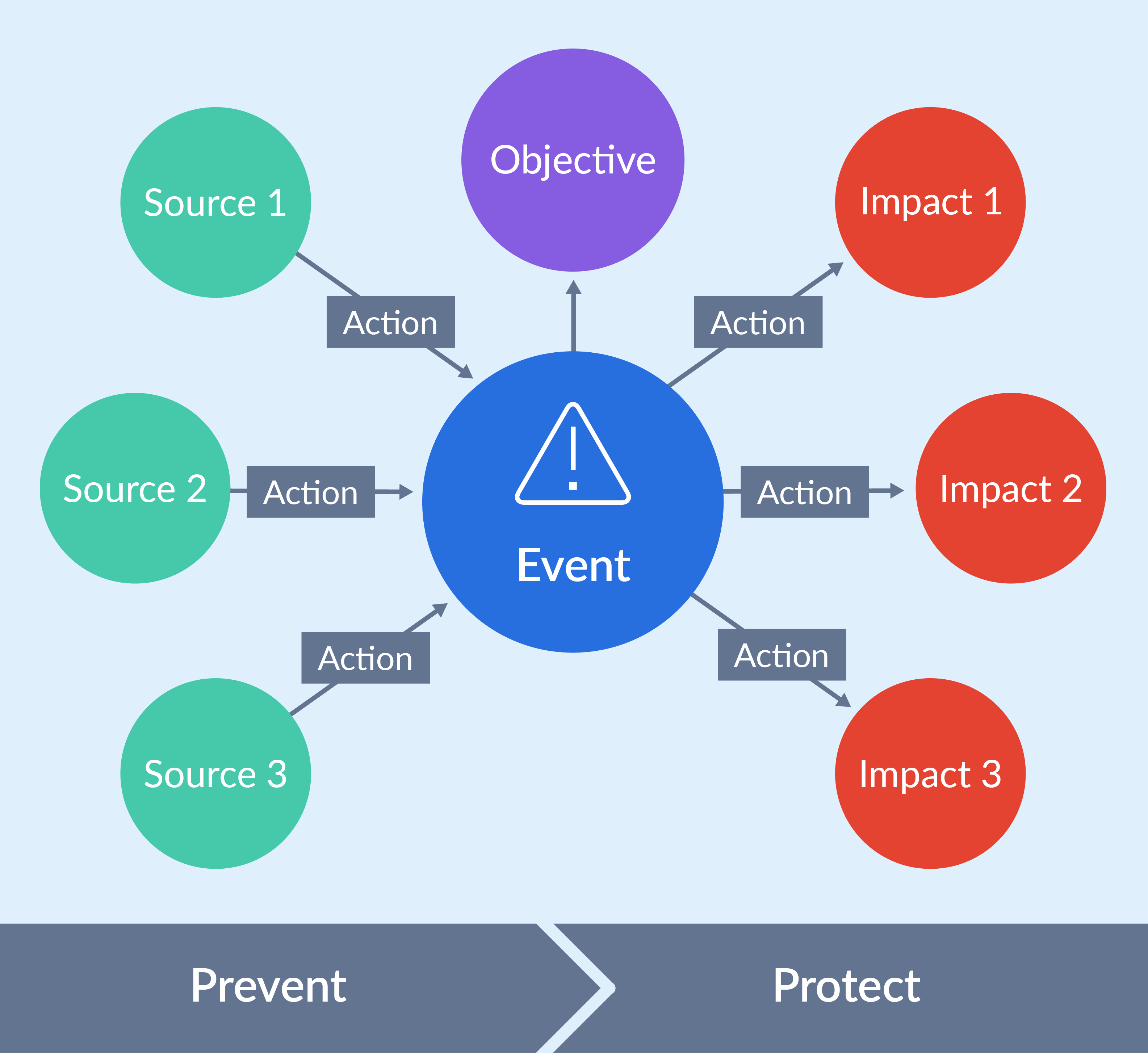To continue operating in an ever-more competitive and unpredictable business world, organizations need to get comfortable dealing with all facets of risk analysis.
With so many diverse objectives, you'll put yourself at a real disadvantage if you haven’t identified how certain risks can affect your project. BowTie risk analysis is a great way to help you combat this by highlighting the contributing factors that can trigger an unexpected event.
By using a complete risk management solution, you can expand upon this analysis and gain complete visibility of the layers of risk affecting your project.
With this in mind, here's why you need to include BowTie analysis as part of your complete risk evaluation.
What is BowTie Risk Analysis?
As you may know, Bowtie analysis isn’t the in-depth evaluation of an upper-tux accessory, it’s a risk evaluation method that can be used to analyze interconnected relationships in high-risk scenarios.
As events and impacts rarely follow the same path, it's important to consider a range of redundant outcomes. By plotting out objectives and associated risks, you can review potential causes and multiple possible results within a single analysis. You can also see how your control measures influence and affect these outcomes.
This method can prove extremely useful for getting a complete overview of events and the interplay between risks and other contributing factors.

The BowTie Process
At the beginning of any BowTie analysis is the objective, which represents the project object which can be affected by the occurrence of the risk. The rest of the BowTie builds around this objective, to keep it in check and prevent any issues.
Once you've highlighted an objective, you can define the event that will occur should the objective become altered or affected. This is called the 'top event'. This can be generic at first, but it's worth revisiting often throughout the process to make it more refined.
Next, the left side of the diagram represents the causes of the event displaying either a threat or an opportunity to the objective. On the other side of the diagram are the consequences, or the subsequent impacts of the top event. It's common to include multiple threats, opportunities, and consequences in your analysis, so define as many as necessary.
Once you've included all of the above, you have an overview of the risks and their impacts. You can then begin to put the necessary barriers in place to manage the unacceptable risks and ensure they don't escalate or adversely affect the objective. The barriers represent the actions taken to either avoid or promote the events occurrence, and to limit or enhance the consequences.
Be Better Prepared With More Data
One of the most beneficial aspects of a BowTie analysis is its ability to display multiple layers of impact and show how these layers interact with each other. With the right risk analysis tool, you can expand the breadth of this analysis to yield more data.
Some of the other benefits of an expanded Bowtie analysis include:
- Easy identification of high probability events
- The ability to build a detailed visual representation of objectives, outcomes, and control measures
- Existing barriers can be identified and evaluated for effectiveness
- Multiple layers can be examined alongside each other
- Easy to create, use, and assess
- Strong visual communication
The BowTie risk model is an incredibly useful tool for identifying and managing risk. It's one of the most widely used models today. The nature of the BowTie means they're subject to continual re-evaluation and review. Thankfully, with new technologies, you can always stay on top and start managing all of your risk evaluations in one place.
Complete Control & Better Analysis
Managing a complex project is no easy feat. Obtaining the data you need to effectively manage your objectives and control risks can often be a daunting task. That's why we created Safran Risk Manager.
Risk Manager is a comprehensive platform for managing risk, performing detailed analysis, and displaying your data in an intuitive, easily digestible format. It works flawlessly with Safran Risk, providing a complete platform to cover all aspects of risk analysis and management.
So, whether you have a smaller project or a large new-build, you can be confident that you have all the tools and data at your disposal to make the right decisions.
To find out more about how Safran Risk Manager can improve your risk management, book a free demonstration of our software today.



